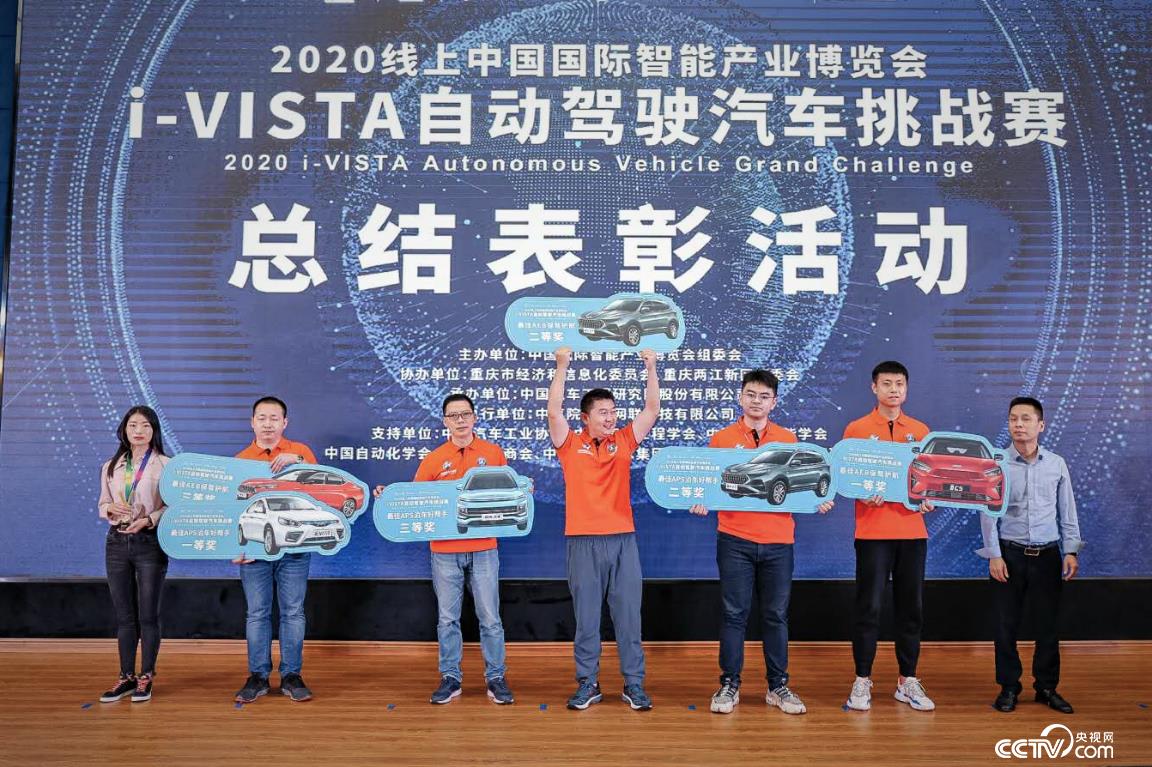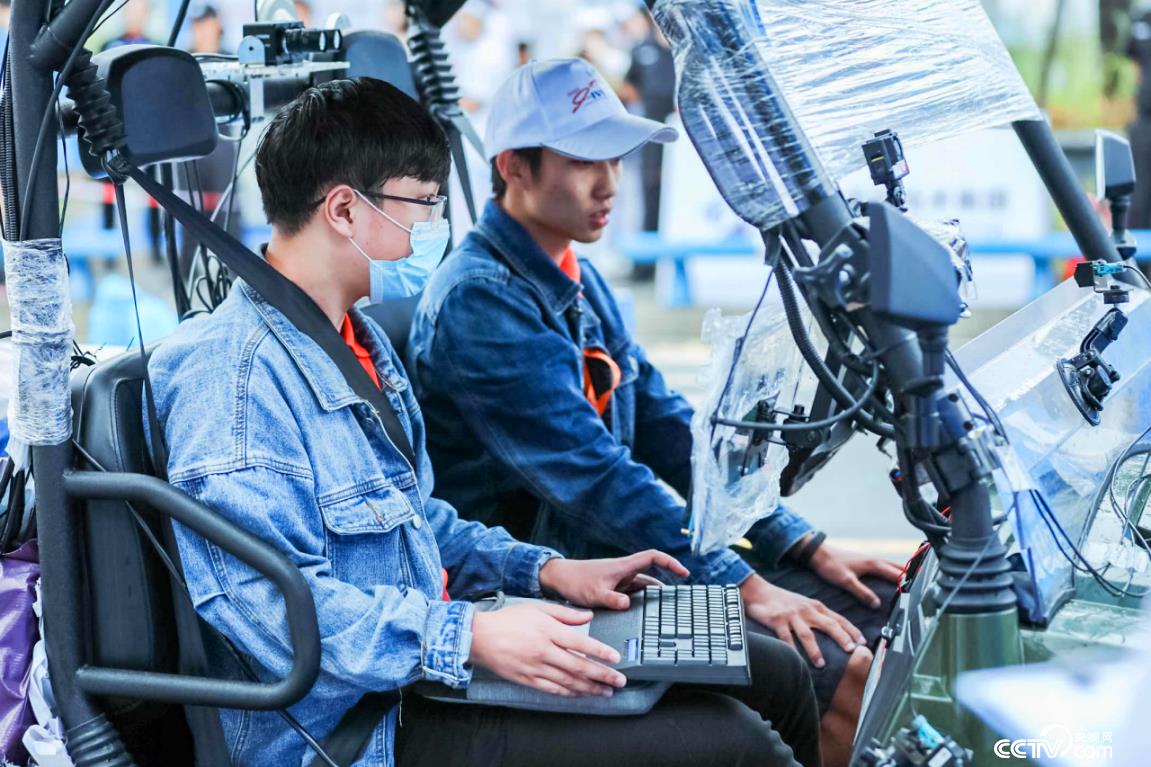CCTV News(Reporter, He Chuan, Wang Lili) On the afternoon of September 15th, the "2020i-VISTA autonomous car challenge" of the Smart Expo ended successfully, and the event selected five individual champions: the strongest car brain, virtual simulation, AEB automatic braking, APS automatic parking, and commercialization process.

Awards site
As one of the most important events of the 2020 Online China International Intelligent Industry Expo, this challenge kicked off on September 12 and lasted for three days. Nearly 30 mainstream models participated in the ADAS (AEB/APS) challenge, and 21 professional teams competed for the championship of the Strongest Car Brain Challenge, Virtual Simulation Challenge, and Commercialization Process Challenge.
The ultimate goal of autonomous driving is to achieve driverless driving. The current skills of autonomous cars in China can be seen in the "Commercialization Process Challenge" in this challenge.
According to the team leader of the referee team, not only were the roads narrower, there were more curves and steep slopes, but the more "demanding" thing was to achieve a "true driverless" competition in China. Although there was still a safety guard in the car, as long as the safety guard intervened in the direction, the competition was immediately terminated.
Experts at China Automotive Research said that in the competition, the participating vehicles are not the more equipped with lidar, millimeter-wave radar, cameras and other equipment, the smarter they are. These equipment will collect too much data, which will increase the burden of the "car brain" and easily interfere with each other.

The commercialization challenge is underway
During the competition, the participating vehicles have to deal with scenarios such as: stopping and stopping the car in front, random vehicle interference, etc., simulating the conditions often encountered by daily driving such as congested road sections, active overtaking, and main car following, and the scene is mobile, not fixed. In addition, the participating vehicles not only have to deal with the unique natural curves and undulating ramps in the mountain city of Chongqing, which are not included in the competition scene, but also have to maintain a certain speed in order to complete the race within the stipulated 10 minutes.
On the last race day, 14 professional teams from Tsinghua University, Chongqing University of Posts and Telecommunications, Jianghuai Automobile and other units competed in the Commercialization Process Challenge. The continuous autumn rain in Chongqing, coupled with thick clouds and more fog, had a greater impact on cameras, images and videos. In order to better complete the race and obtain higher scores, under the rule speed limit of 60km/h, most of the participating teams did not exceed 40km/h to avoid accidents such as pressing lines and scratching.
Ultimately, all 13 teams from car companies and universities completed the race in a driverless state, and the Qingyan Intelligent Team ranked first in the commercialization process challenge with a score of 4020 points.
With the continuous evolution of autonomous vehicle technology and the gradual landing of business, the competition challenges for the autonomous driving industry are also escalating, and they are closer to the daily driving scenarios of autonomous vehicles. These experiences accumulated in the event will give the industry more benign feedback and help the arrival of autonomous driving.